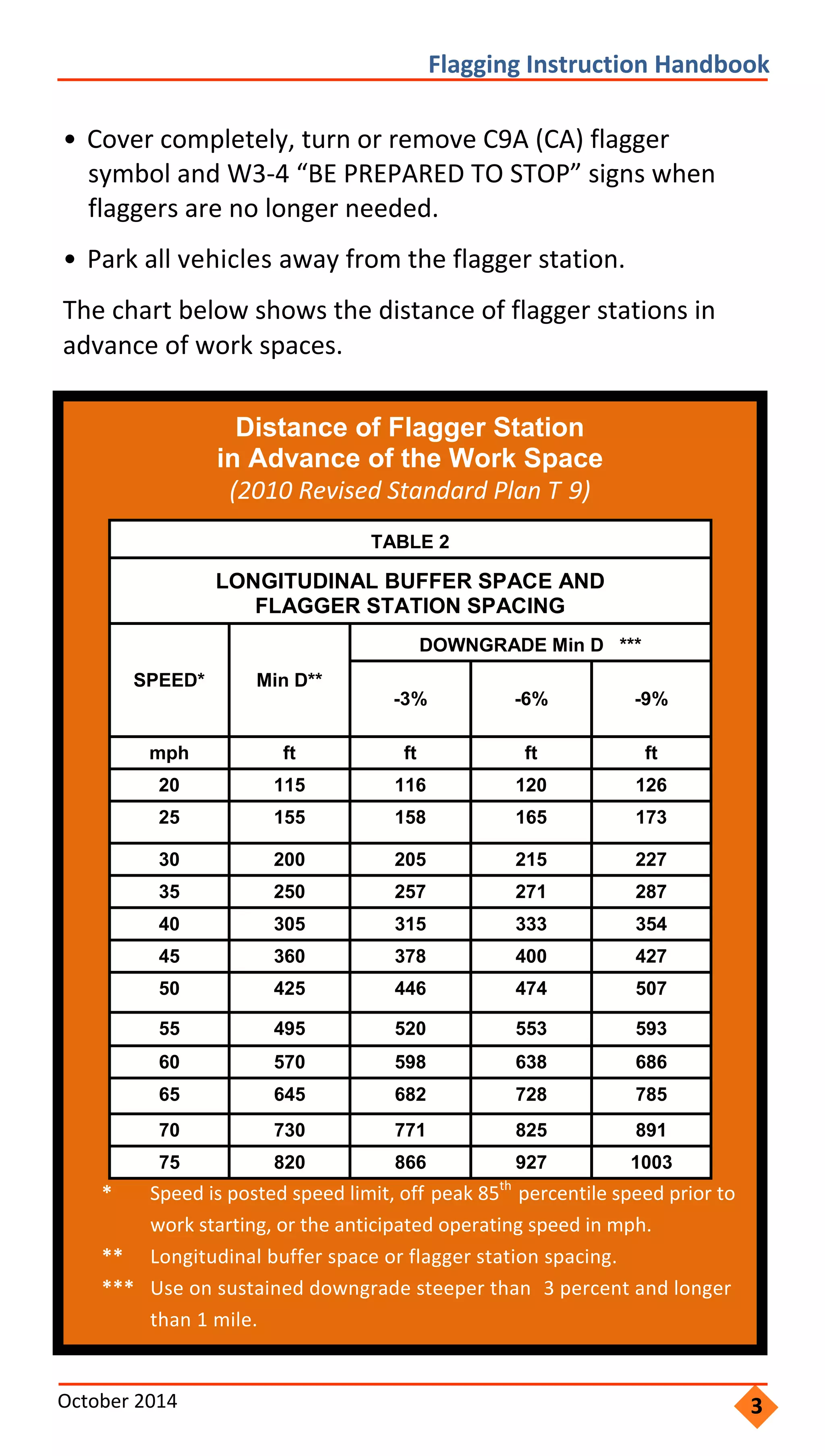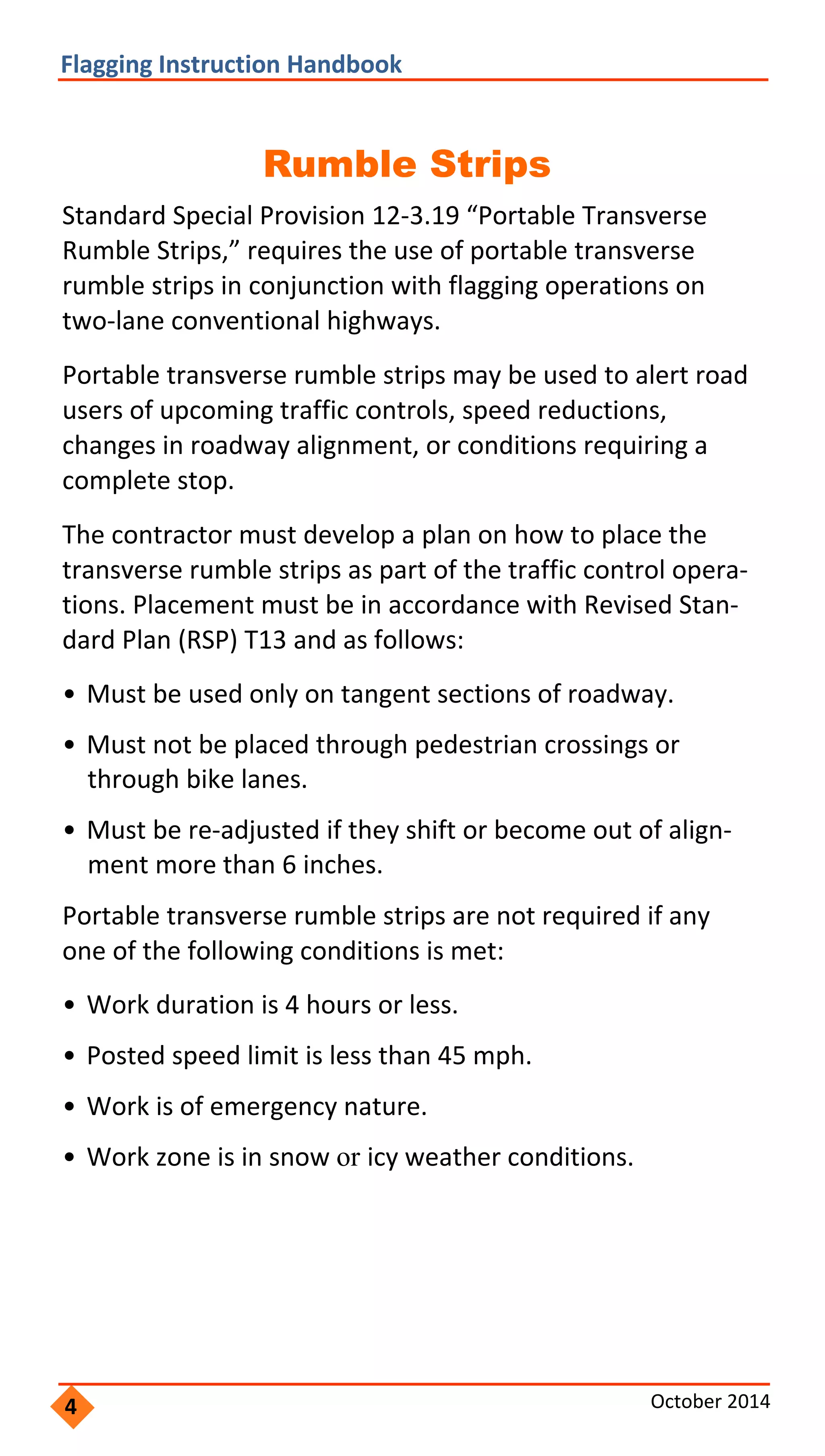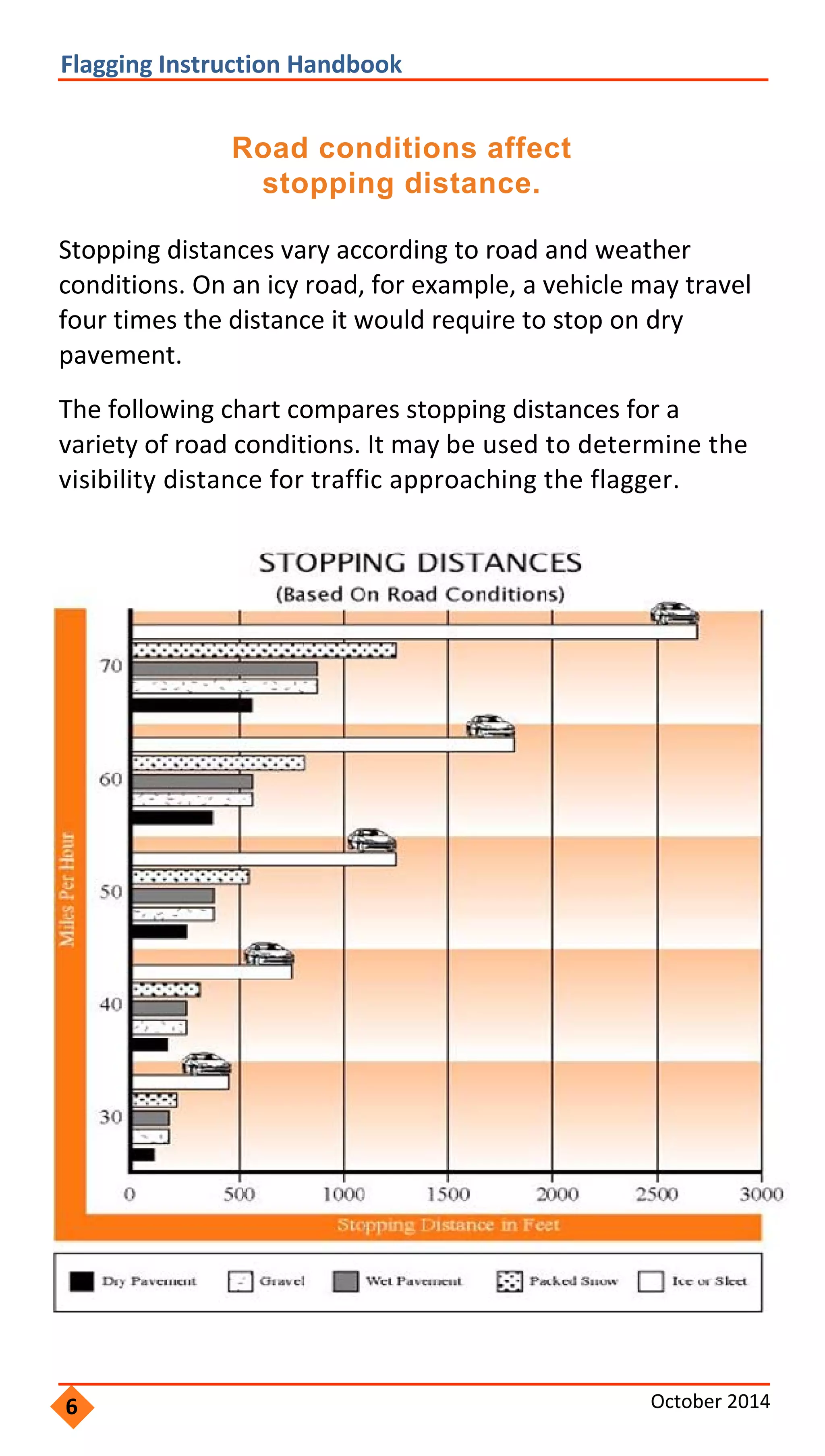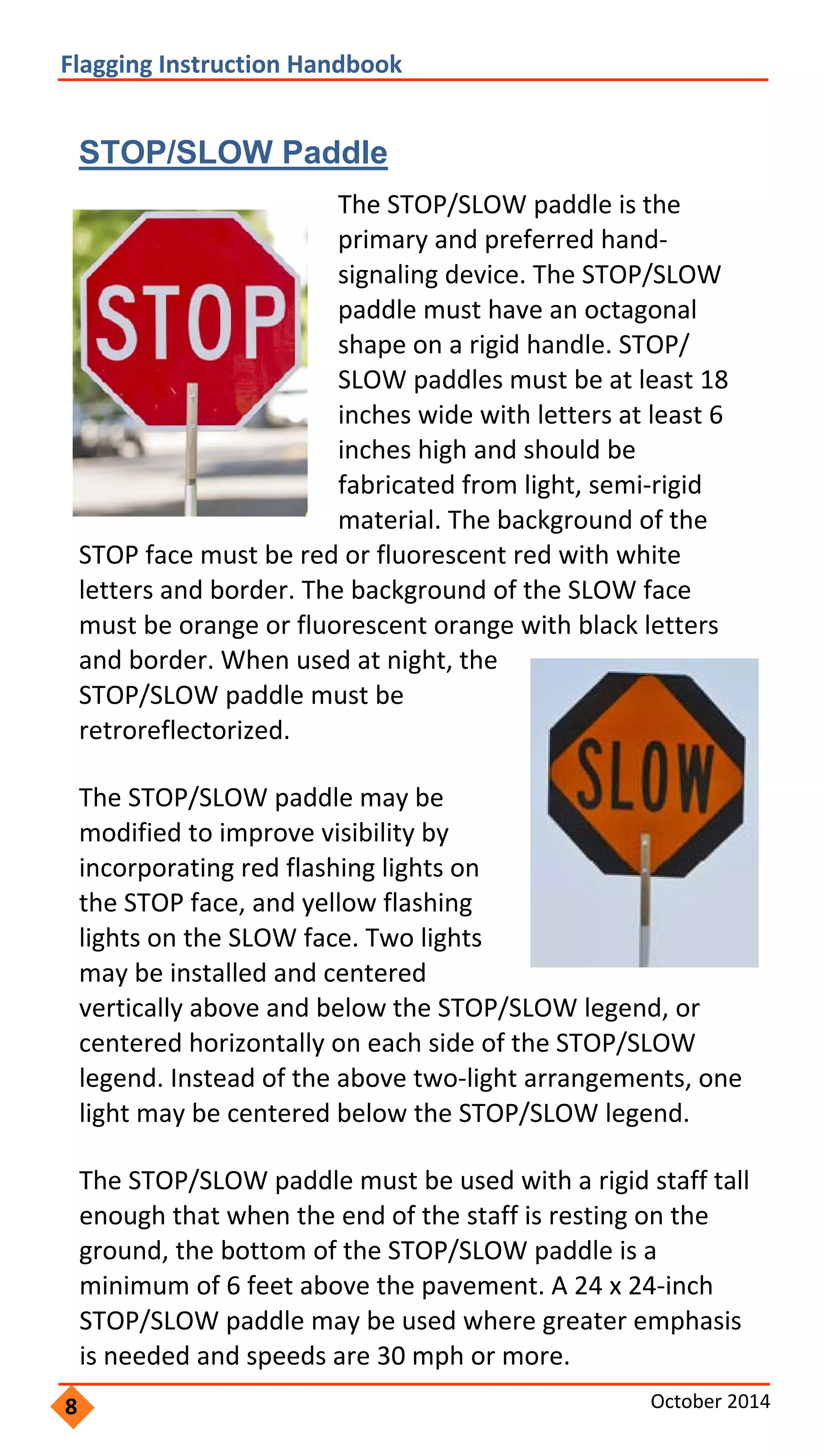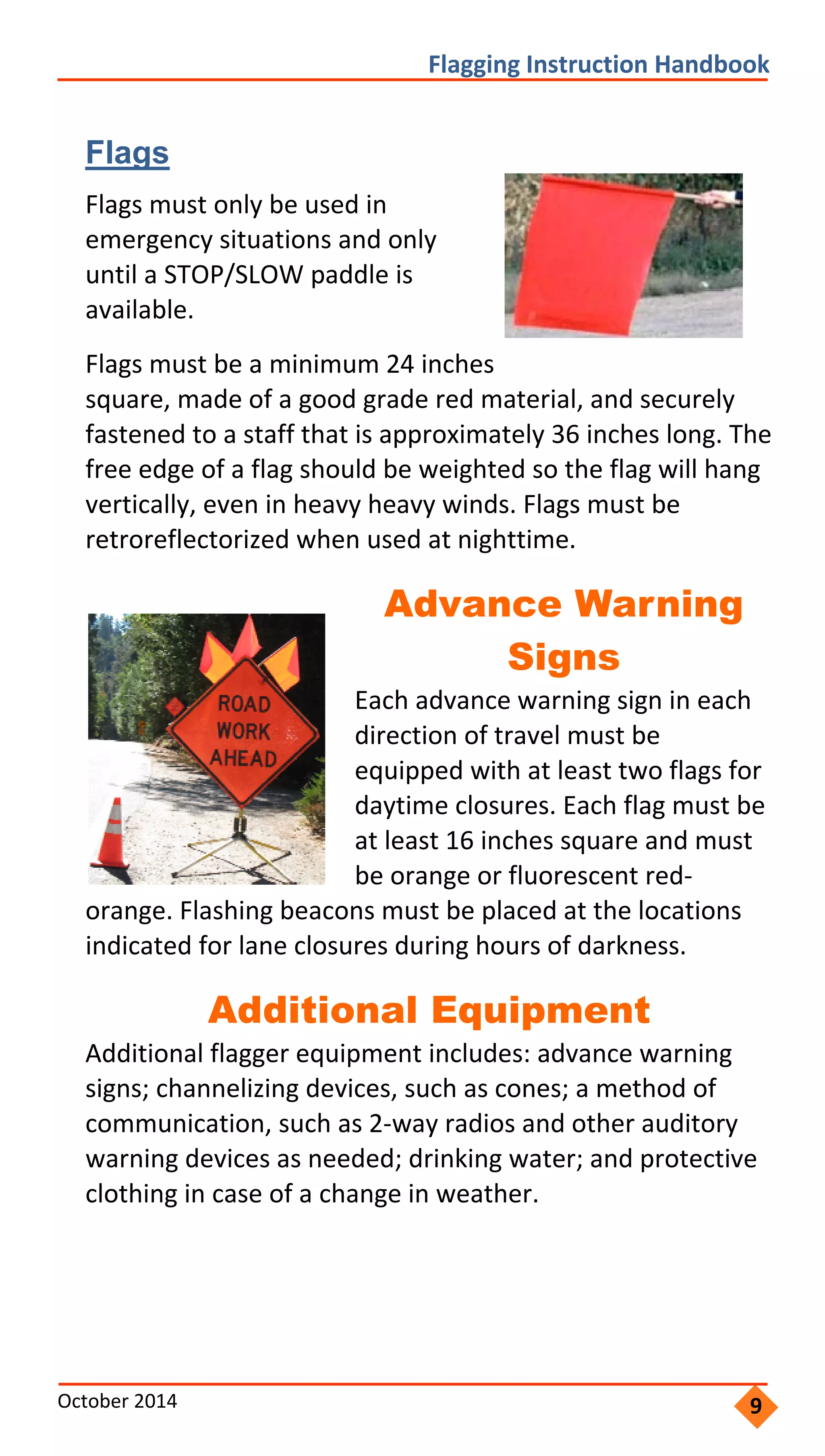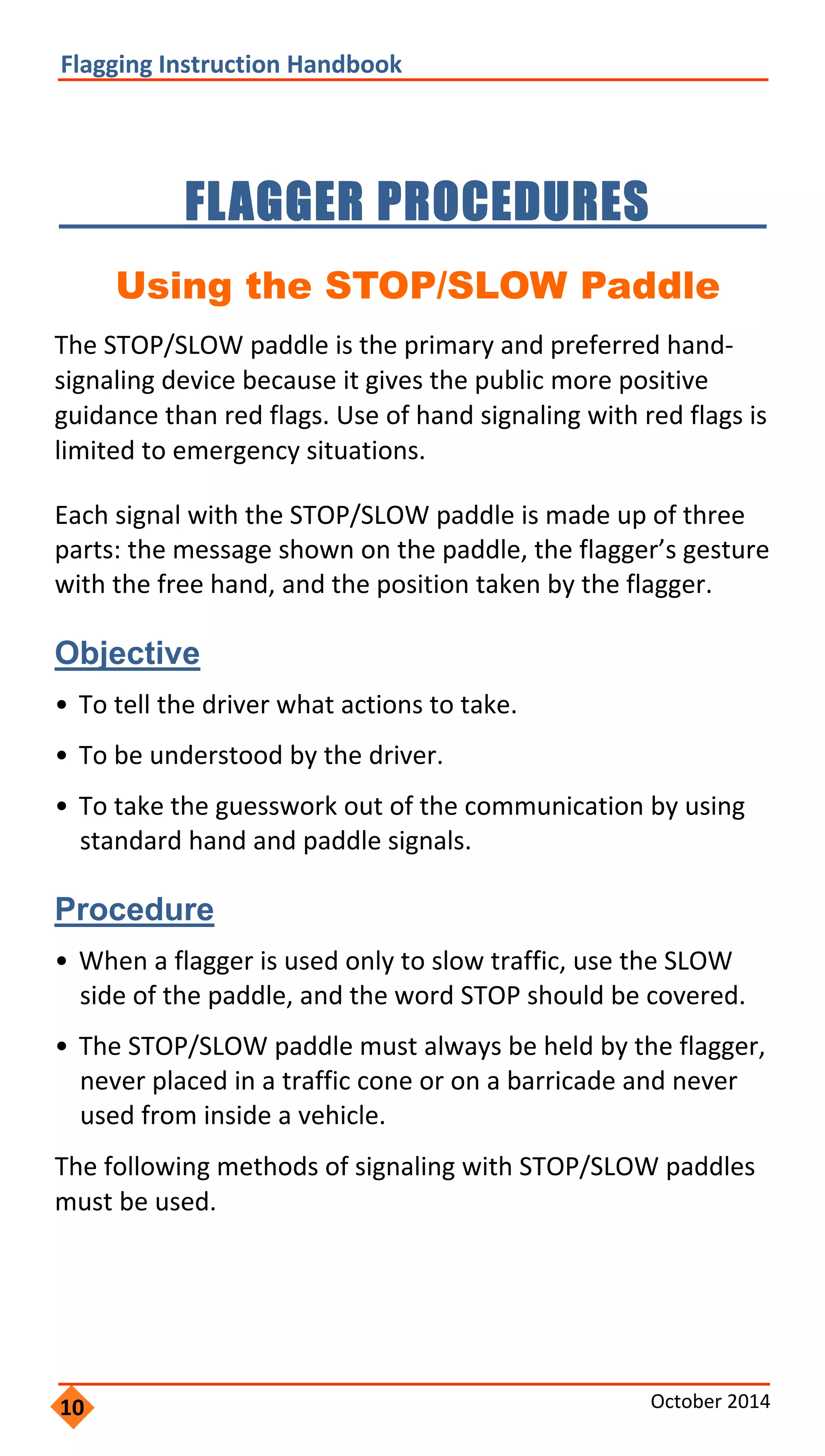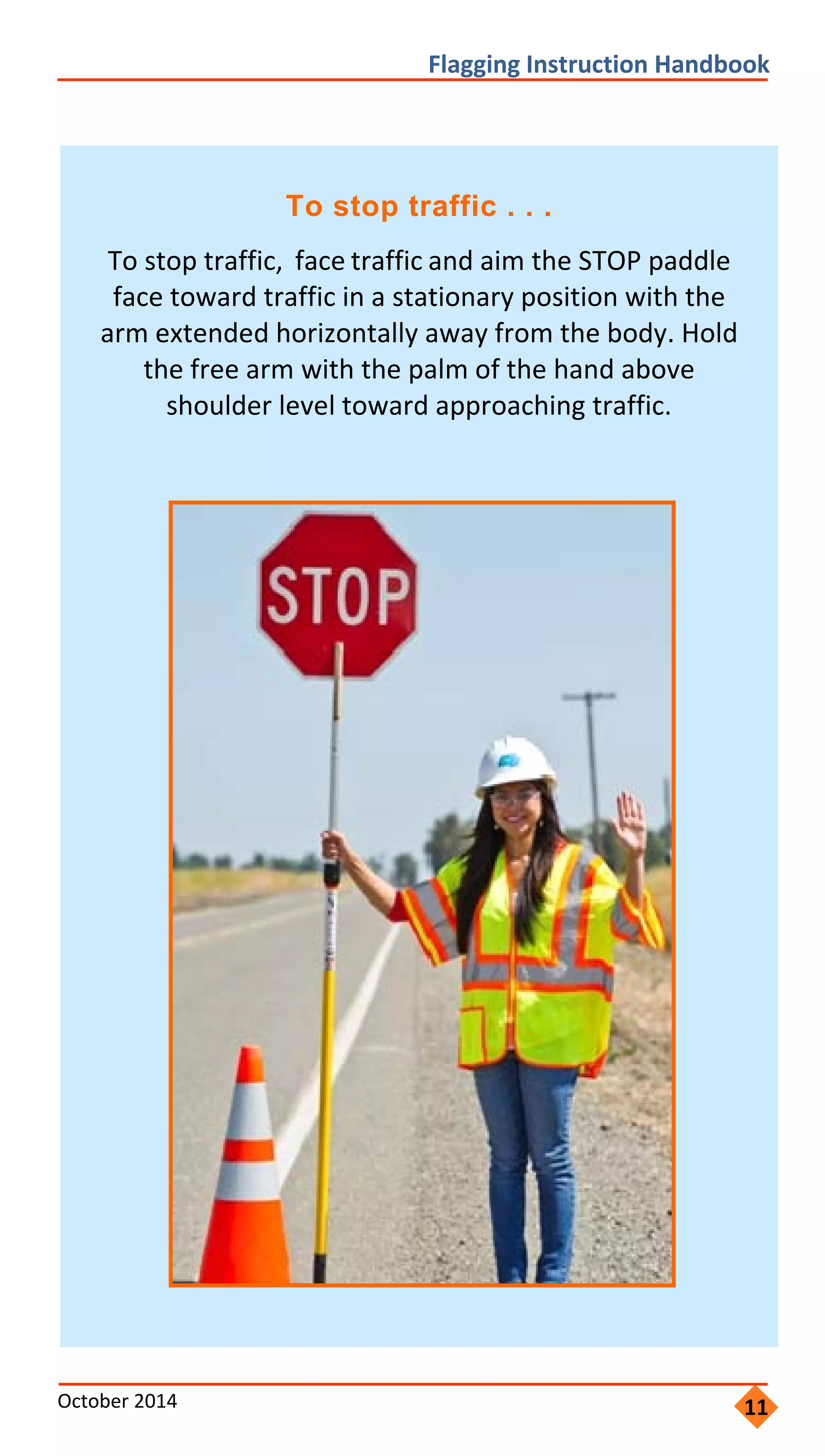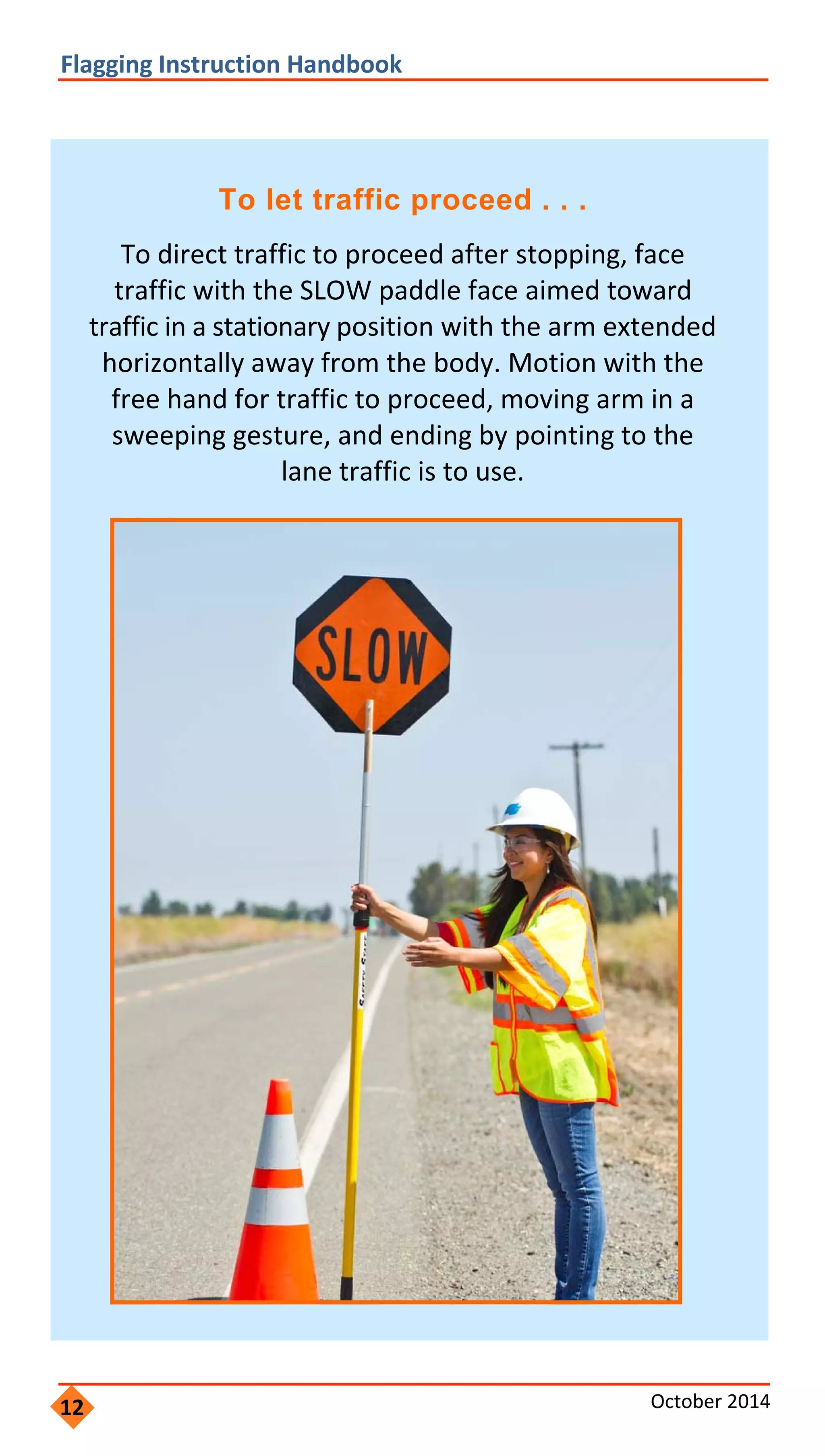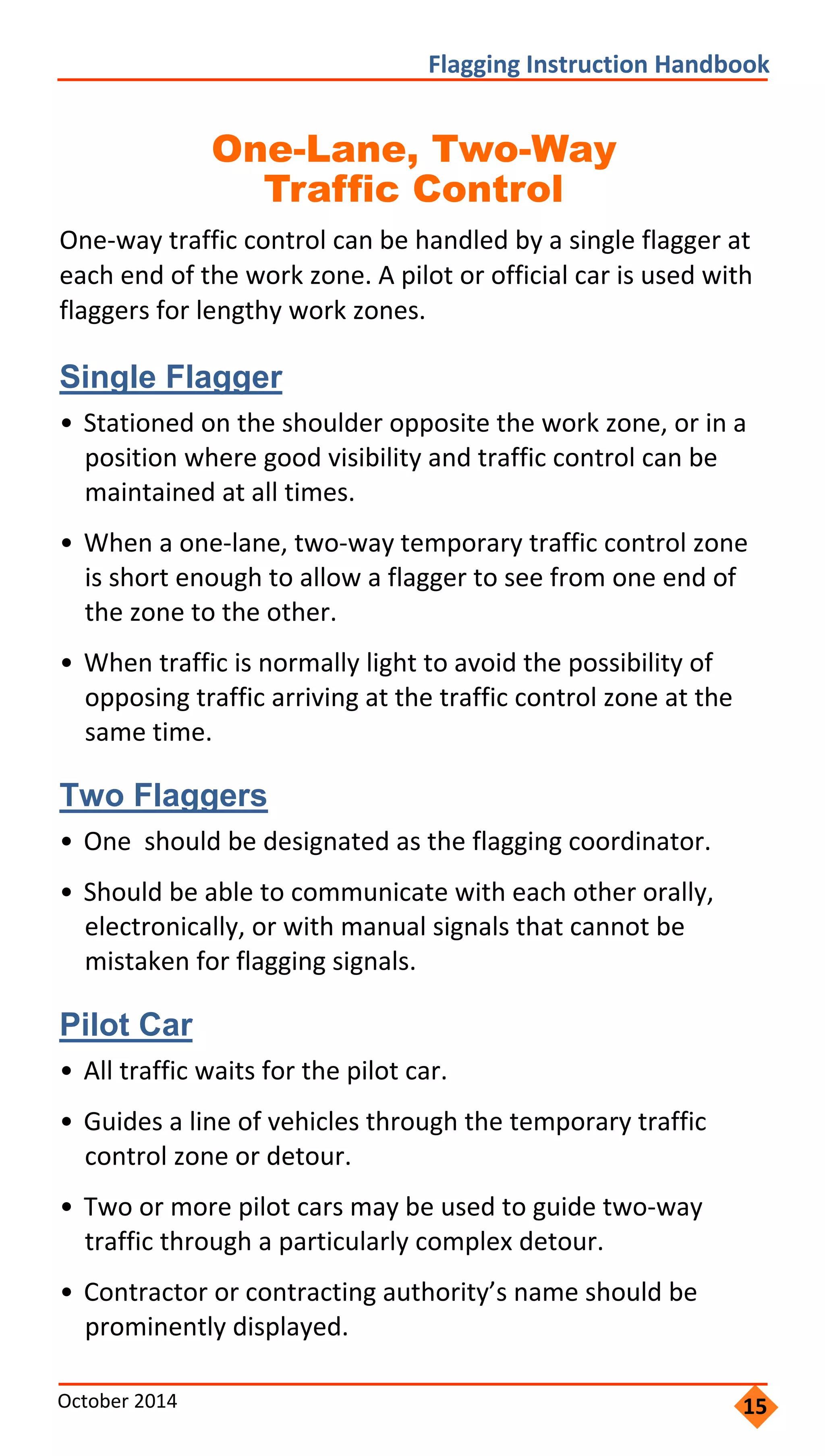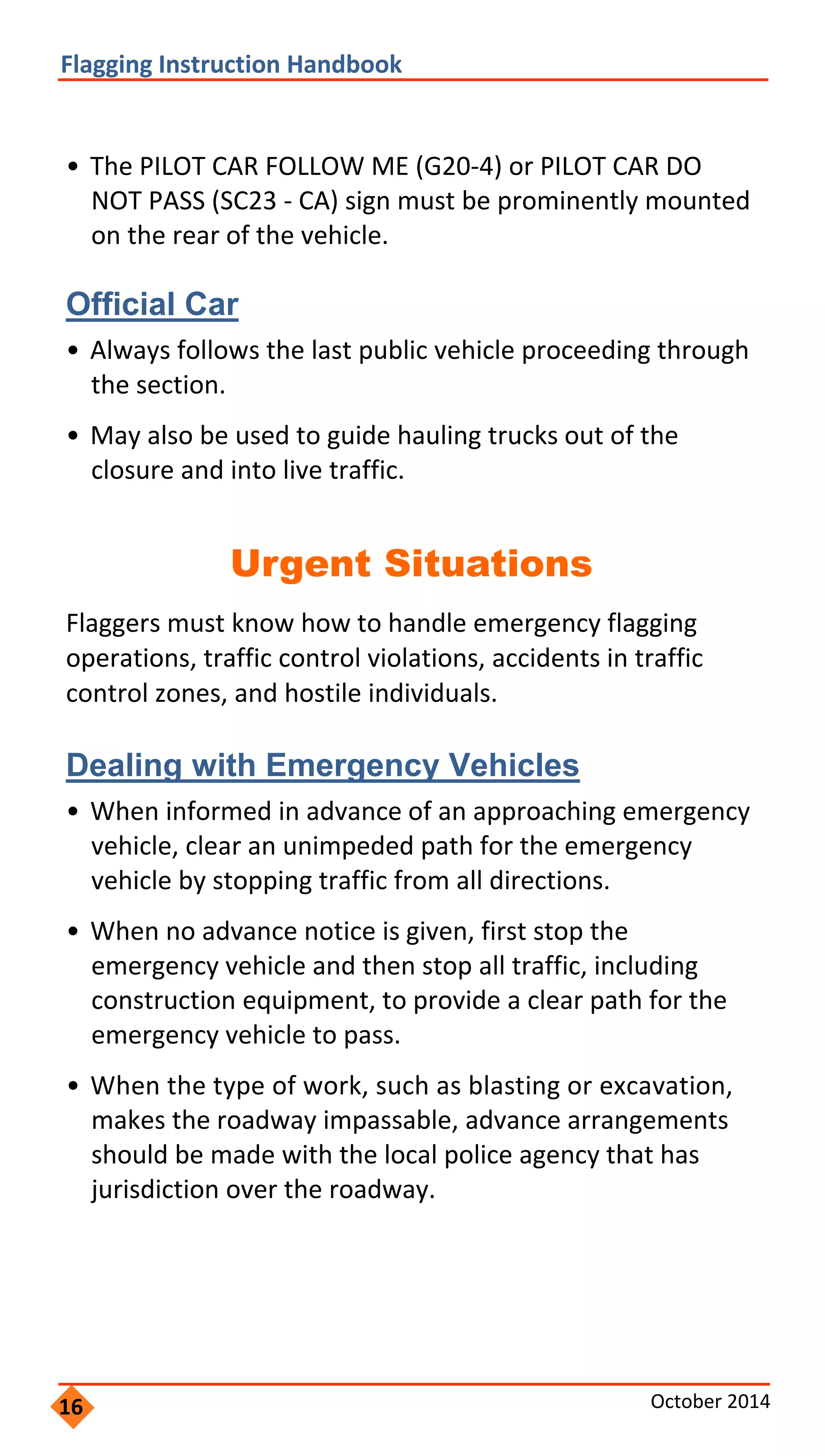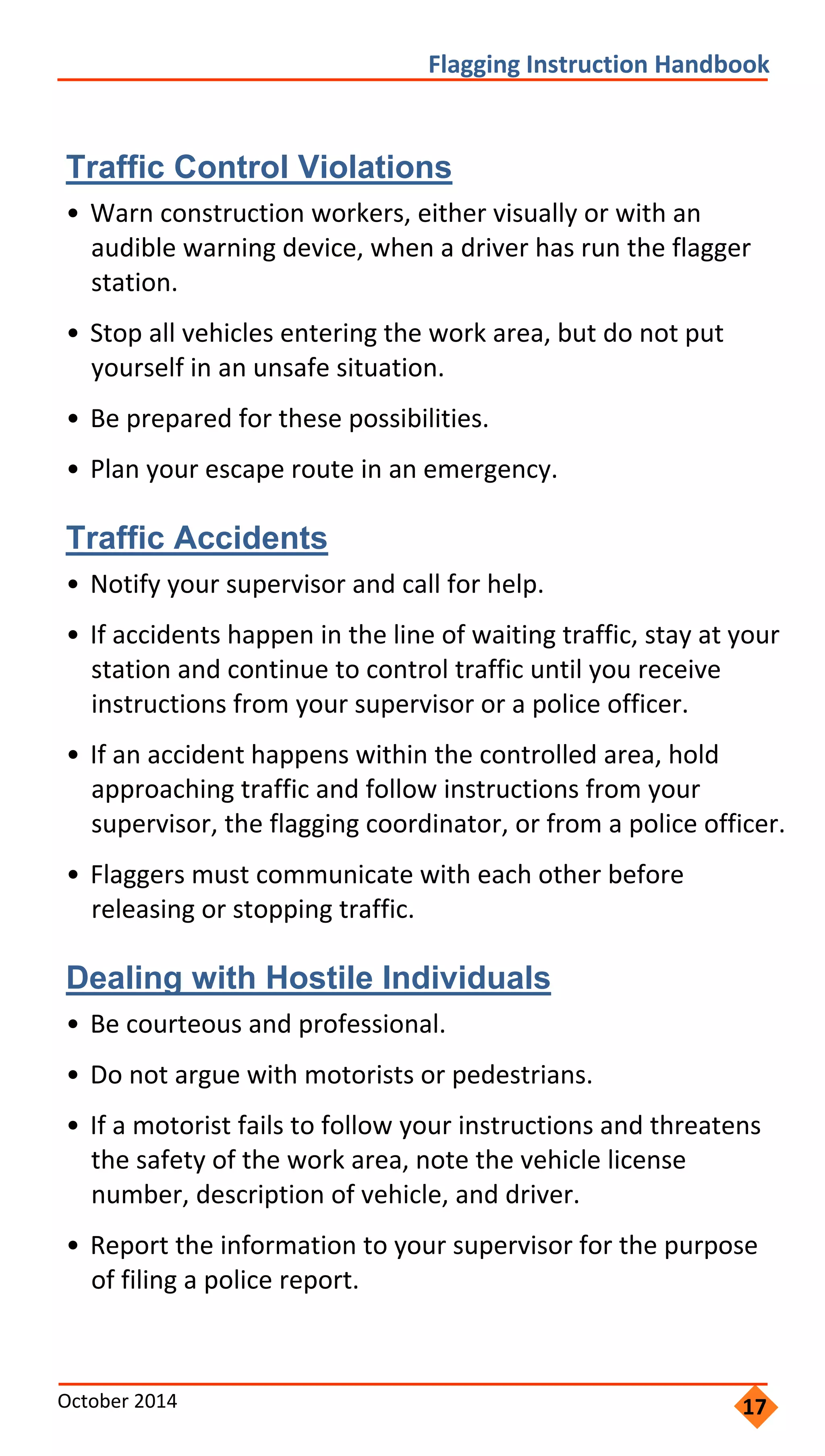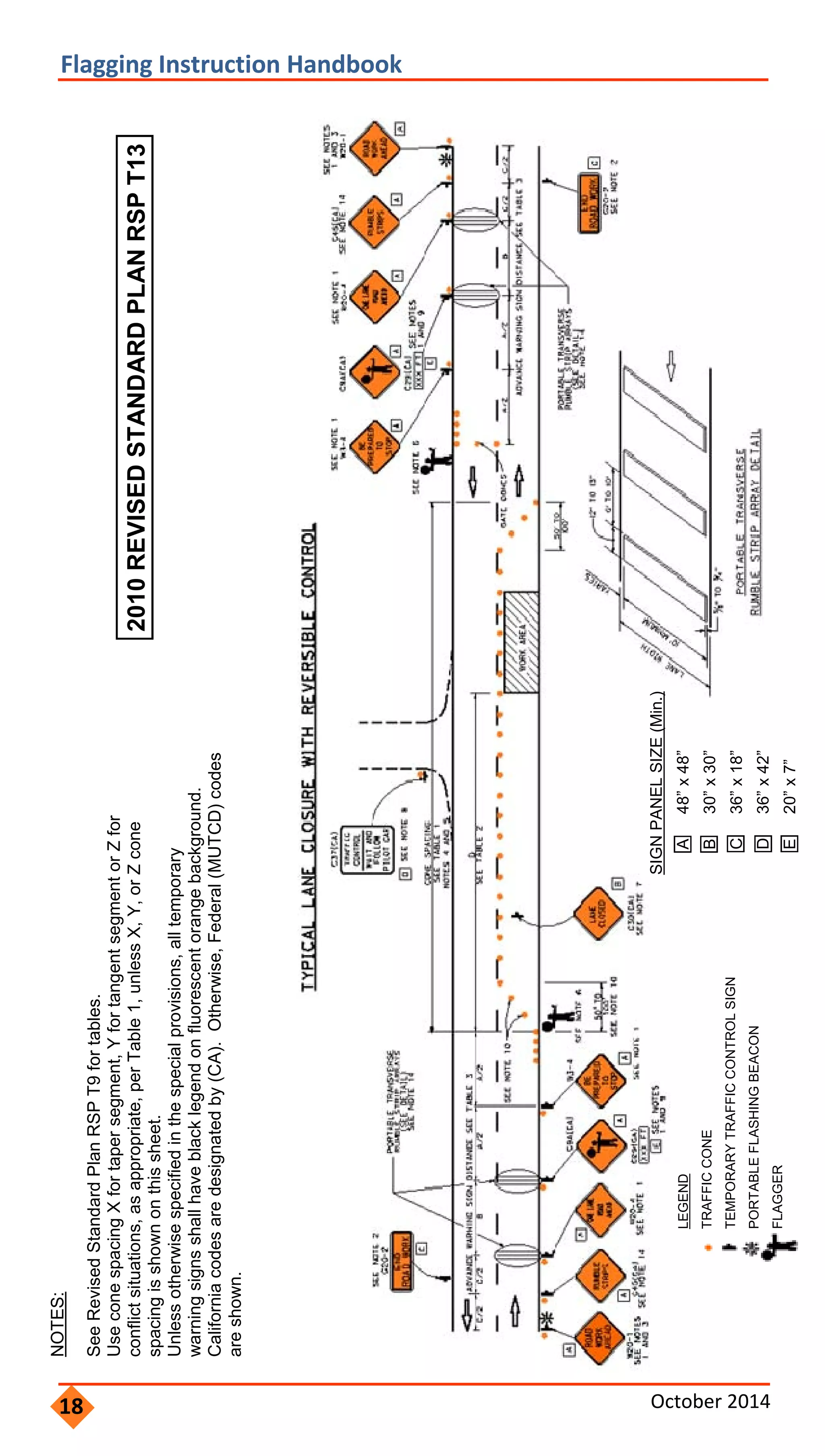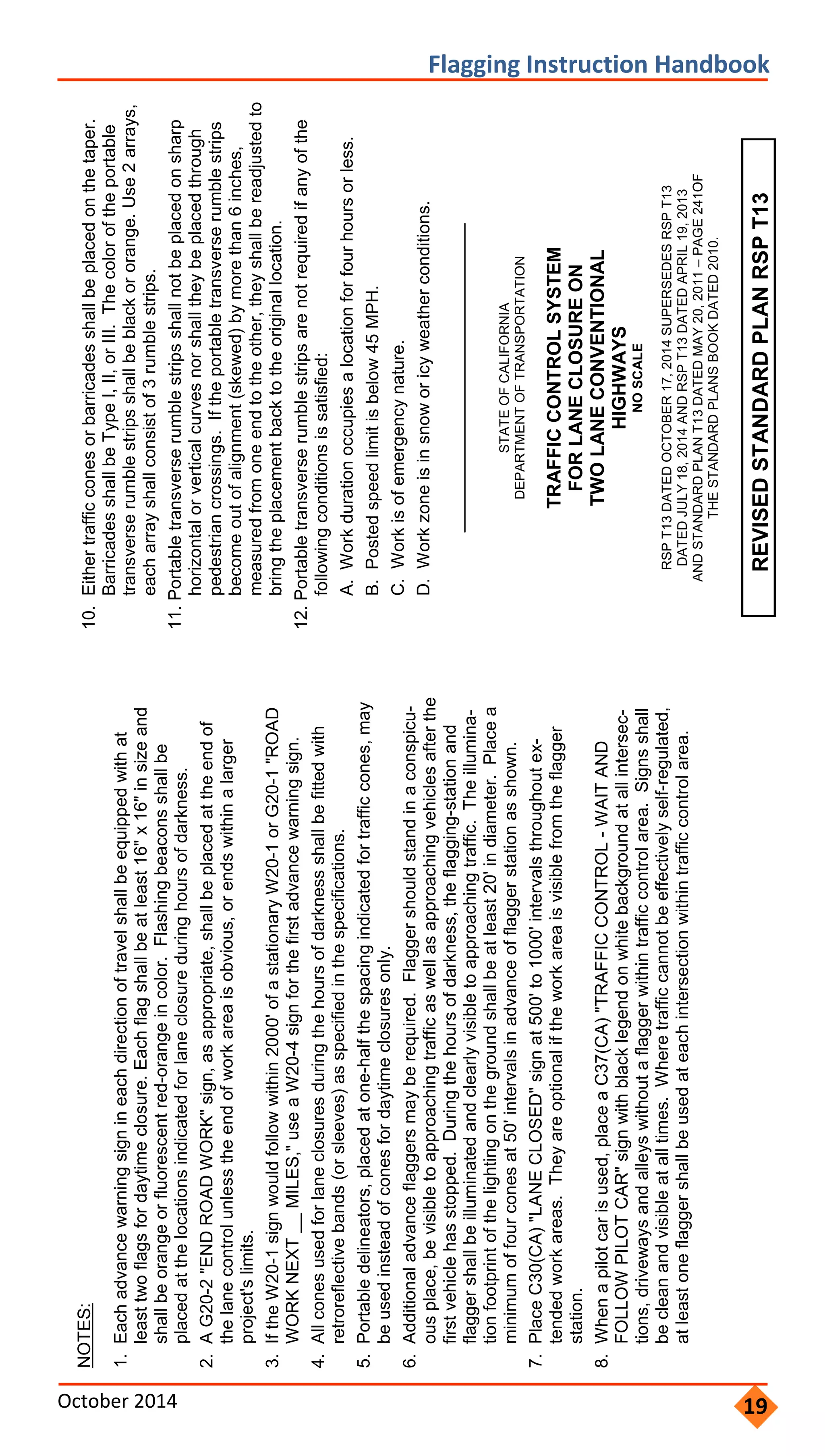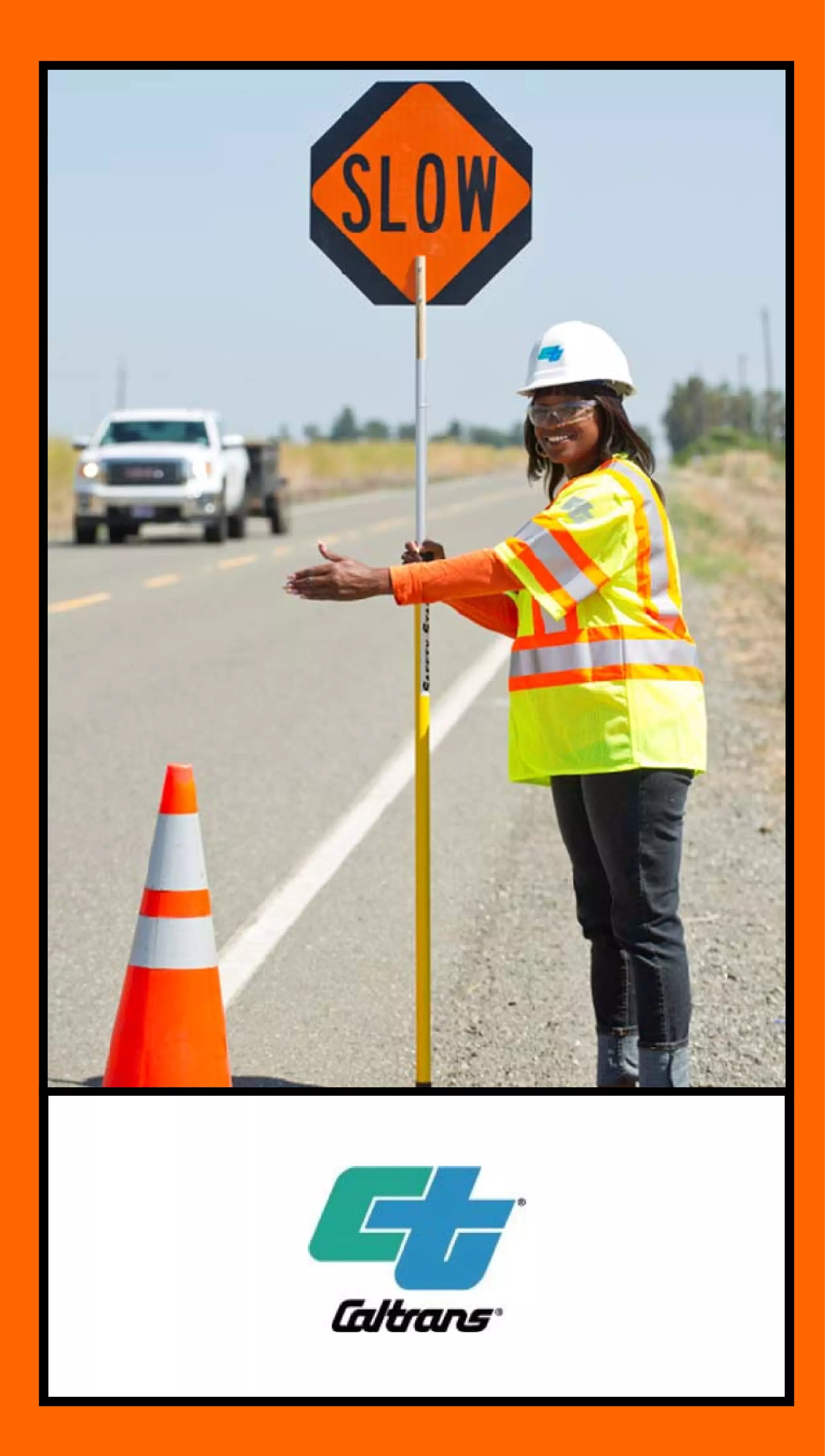This document provides guidance on flagging operations for controlling traffic through work zones. It outlines flagger responsibilities and abilities, guidelines for setting up flagger stations, approved safety equipment including high-visibility vests and STOP/SLOW paddles, standard procedures for directing traffic using hand signals or flags, and considerations for special situations like emergencies or hostile individuals. The primary goals are to provide clear guidance to drivers and protect worker and driver safety.
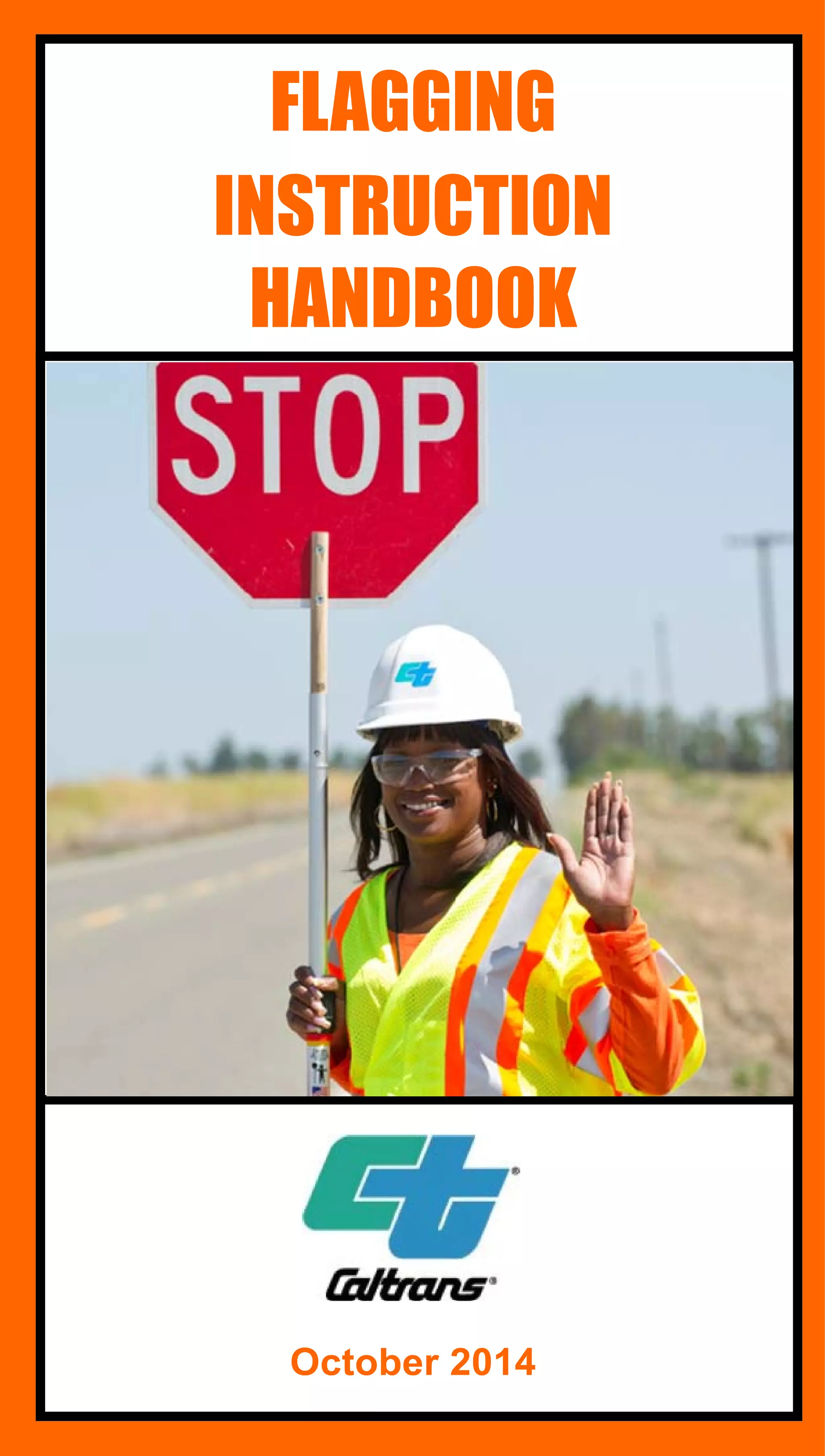

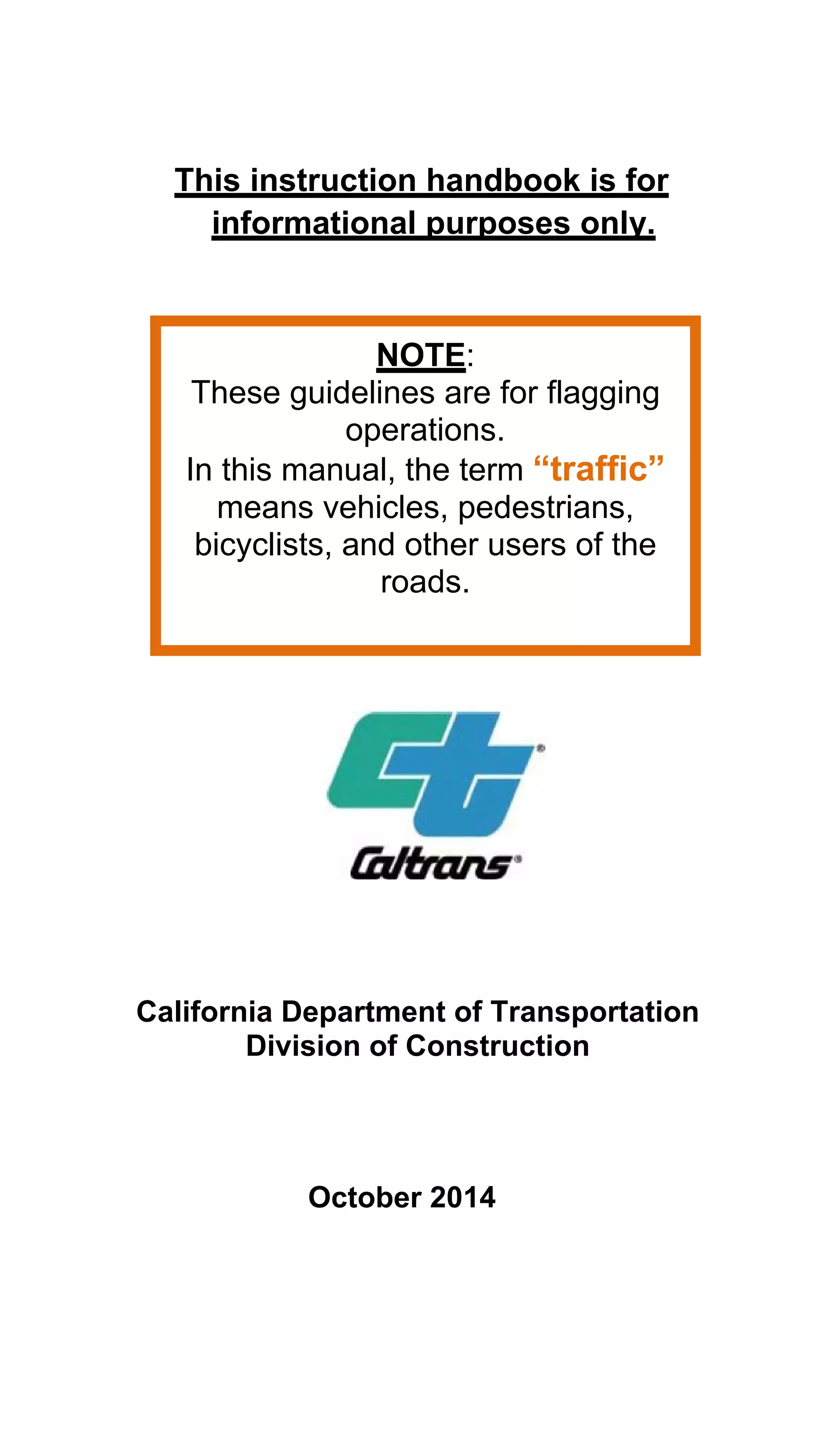
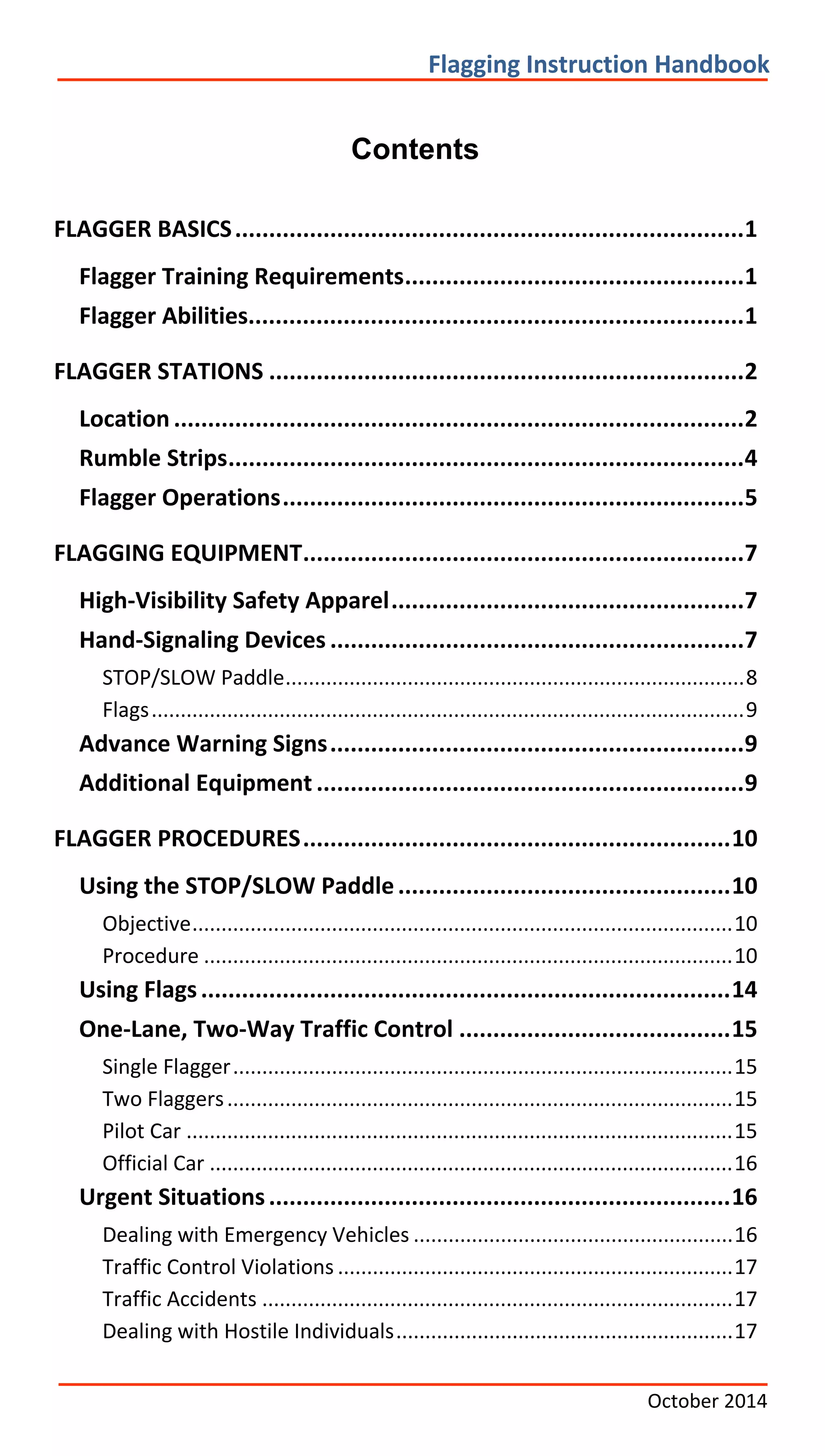
![Flagging Instruction Handbook
FLAGGER BASICS
Flagger Training Requirements
Section 1599, “Flaggers,” of the Construction Safety Orders
(California Code of Regulations [CCR] Title 8, Subchapter 4)
requires that flaggers be trained in the fundamentals of
flagging moving traffic before being assigned as flaggers. The
training requirements for flaggers are included in the
California Manual on Uniform Traffic Control Devices,
Chapter 6.
Training must be provided by a person with the qualifications
and the experience necessary to effectively instruct the
employee and must be documented as required by Section
3203, “Injury and Illness Prevention Program,” of the General
Industry Safety Orders (8 CCR Subchapter 7).
Flagger Abilities
Flaggers are responsible for public safety and for temporary
traffic control. Because flaggers have frequent contact with
traffic, they should demonstrate the following abilities:
• Receive and communicate specific instructions clearly,
firmly, and courteously.
• Move and maneuver quickly to avoid danger from errant
vehicles.
• Control signaling devices (such as paddles and flags) to
provide clear and positive guidance to drivers
approaching a temporary traffic control zone in frequently
changing situations.
October 2014 1](https://image.slidesharecdn.com/flagginghandbook-220329091904/75/flagging_handbook-pdf-5-2048.jpg)

